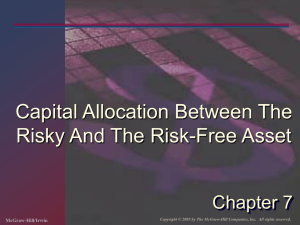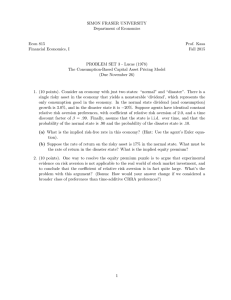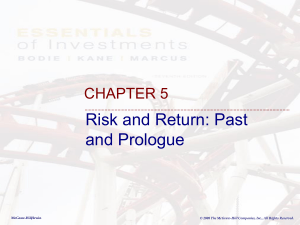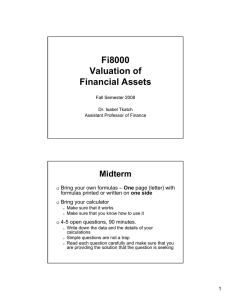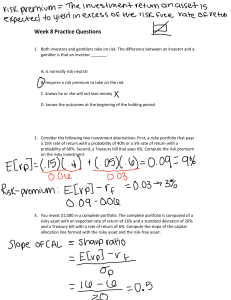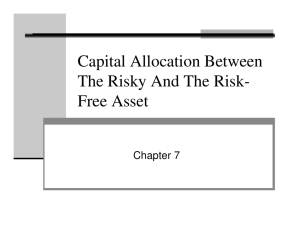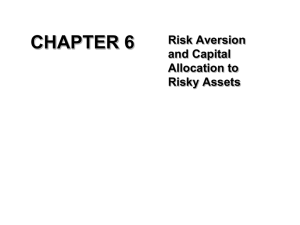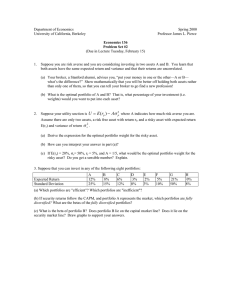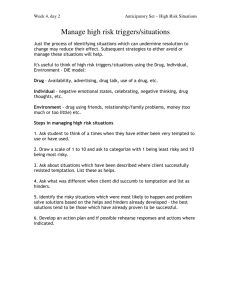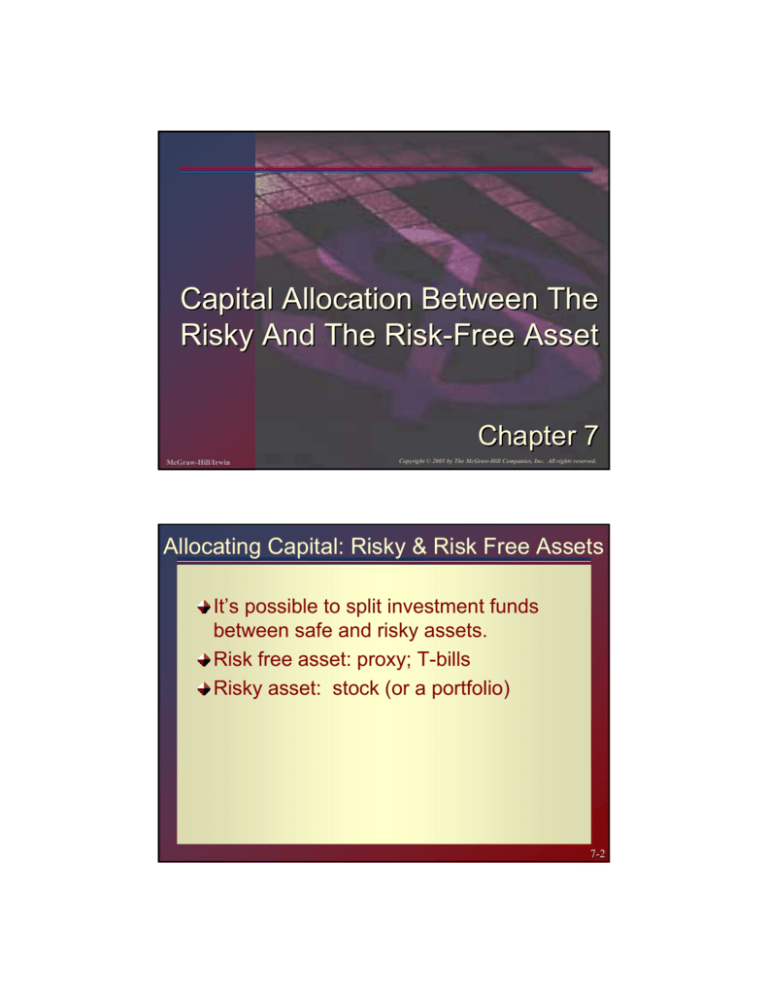
Capital Allocation Between The
Risky And The Risk-Free Asset
Chapter 7
McGraw-Hill/Irwin
Copyright © 2005 by The McGraw-Hill Companies, Inc. All rights reserved.
Allocating Capital: Risky & Risk Free Assets
It’s possible to split investment funds
between safe and risky assets.
Risk free asset: proxy; T-bills
Risky asset: stock (or a portfolio)
7-2
7-2
Allocating Capital: Risky & Risk Free Assets
Issues
Examine risk/return tradeoff.
Demonstrate how different degrees
of risk aversion will affect
allocations between risky and risk
free assets.
7-3
7-3
Example Using Chapter 7.3 Numbers
rf = 7%
σrf = 0%
E(rp) = 15%
σp = 22%
y = % in p
(1-y) = % in rf
7-4
7-4
Expected Returns for Combinations
E(rc) = yE(rp) + (1 - y)rf
rc = complete or combined portfolio
For example, y = .75
E(rc) = .75(.15) + .25(.07)
= .13 or 13%
7-5
7-5
Possible Combinations
E(r)
E(rp) = 15%
E(rc) = 13%
P
C
rf = 7%
F
0
σc
22%
σ
7-6
7-6
Variance For Possible Combined Portfolios
Since
σ r = 0, then
f
σ c = y σ p*
* Rule 4 in Chapter 6
7-7
7-7
Combinations Without Leverage
If y = .75, then
σ
c
= .75(.22) = .165 or 16.5%
If y = 1
σ c = 1(.22) = .22 or 22%
If y = 0
σ c = (.22) = .00 or 0%
7-8
7-8
Capital Allocation Line with Leverage
Borrow at the Risk-Free Rate and invest
in stock.
Using 50% Leverage,
rc = (-.5) (.07) + (1.5) (.15) = .19
σc = (1.5) (.22) = .33
7-9
7-9
CAL (Capital Allocation Line)
E(r)
P
E(rp) = 15%
E(rp) - rf = 8%
) S = 8/22
rf = 7%
F
0
σp = 22%
σ
7-10
7-10
CAL with Higher Borrowing Rate
E(r)
P
) S = .27
9%
7%
) S = .36
σ
σp = 22%
7-11
7-11
Risk Aversion and Allocation
Greater levels of risk aversion lead to larger
proportions of the risk free rate.
Lower levels of risk aversion lead to larger
proportions of the portfolio of risky assets.
Willingness to accept high levels of risk for
high levels of returns would result in
leveraged combinations.
7-12
7-12
Utility Function
U = E ( r ) - .005 A σ2
Where
U = utility
E ( r ) = expected return on the asset or
portfolio
A = coefficient of risk aversion
σ2 = variance of returns
7-13
7-13
CAL with Risk Preferences
E(r)
The lender has a larger A when
compared to the borrower
P
Borrower
7%
Lender
σ
σp = 22%
7-14
7-14


